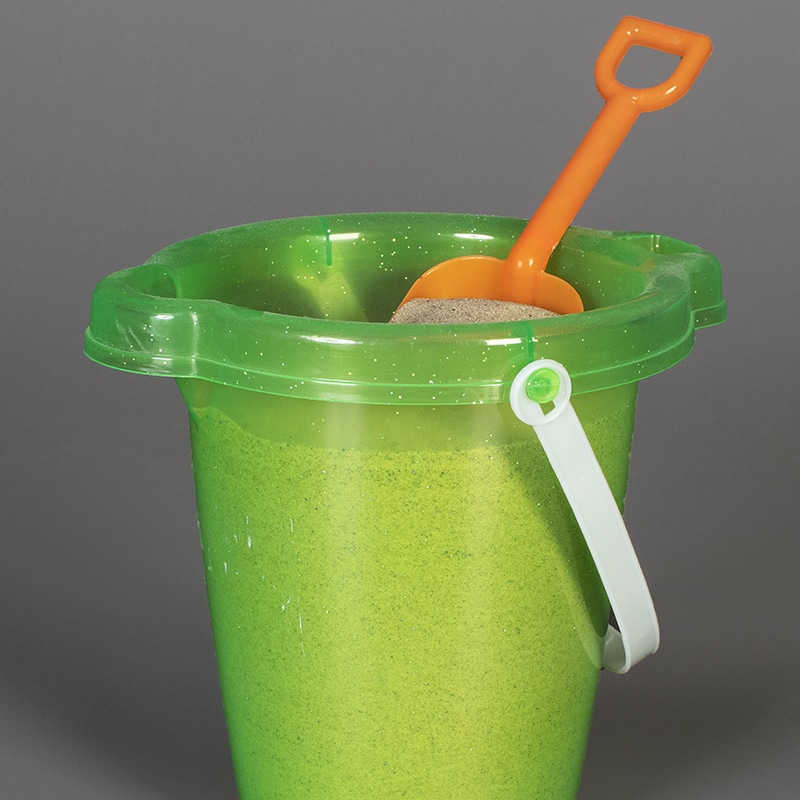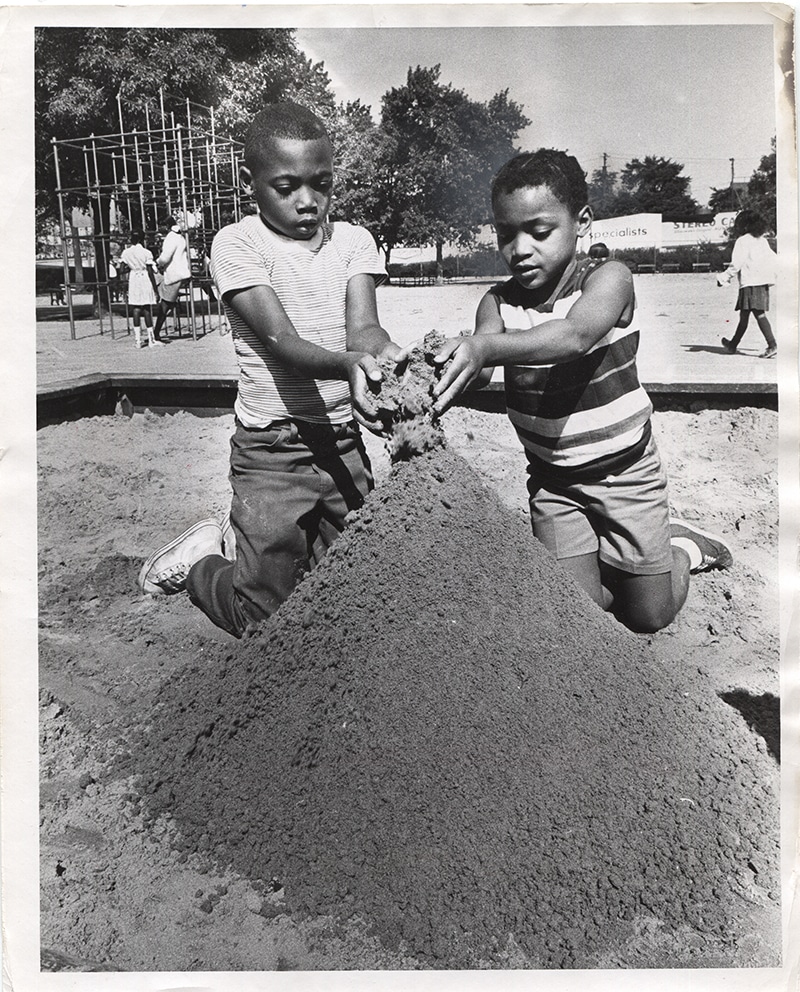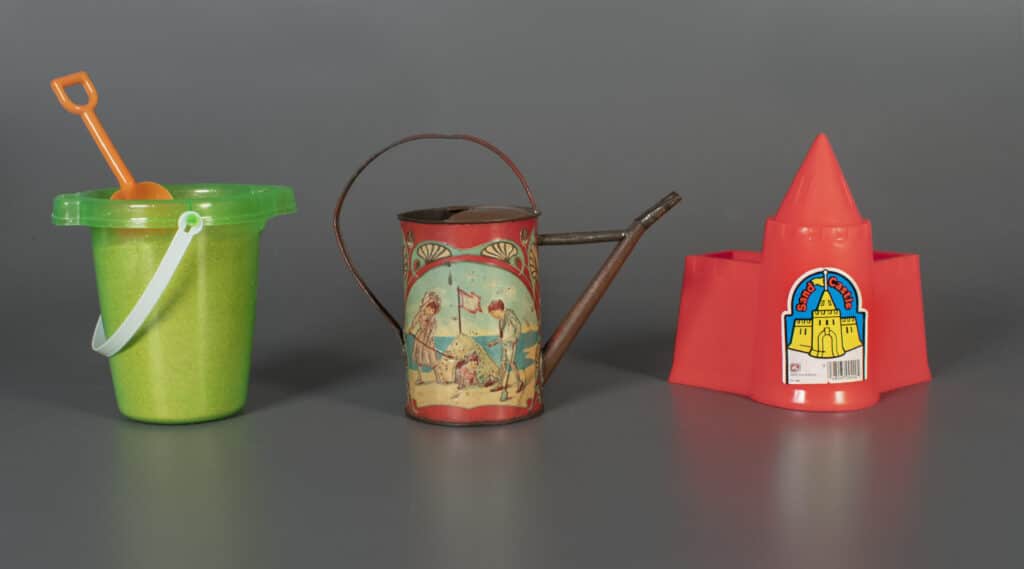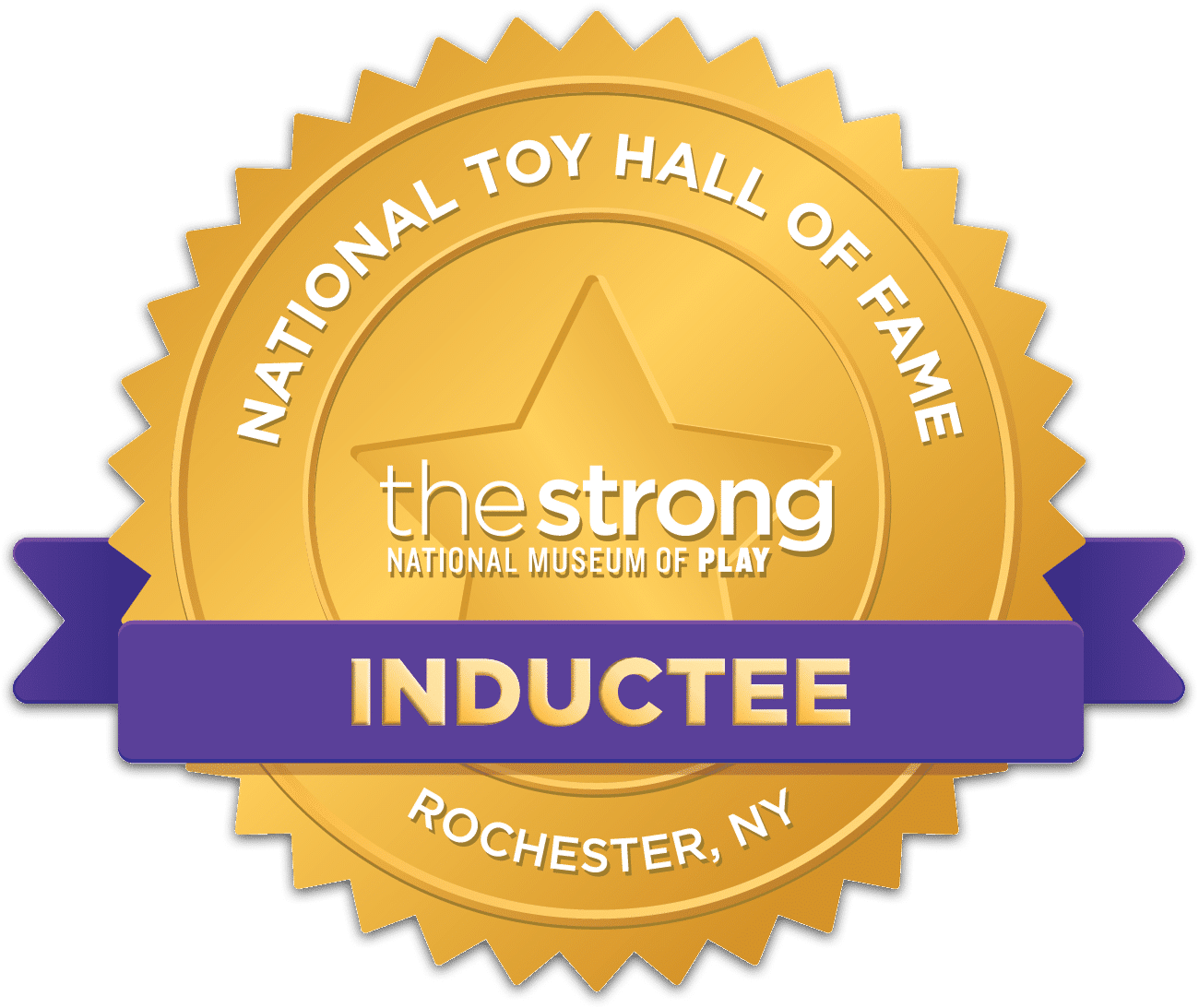
Inducted Year: 2021
Sand may be the most universal toy in the world. From a geologist’s perspective, sand is a dry, gritty material consisting of small, loose pieces of rock, soil, minerals, and gemstones. But children recognize sand as a creative vehicle for play suitable for pouring, scooping, sieving, raking, and measuring. Wet sand is even better, ready to construct, shape, and sculpt.
Historians have every reason to believe that the earliest people played in sand. As early as the 1800s, newspapers reported on the building of sandcastles and other sculptures. Nineteenth-century photographs capture beachgoers burying companions in the sand. A charitable group in Boston formed the first sand garden in 1885. The group deposited a pile of sand in a Boston chapel yard and invited children to dig with small shovels and to make sand pies. Sand gardens provided a space for children in densely populated urban spaces to employ free and directed play, away from the dangers of the streets. These sand gardens launched the playground movement in America. Thirty years later, British pediatrician and child psychiatrist Margaret Lowenfeld devised Sandplay therapy as a means of expression for non-verbal communicators.

People continue to enjoy the open-ended creativity and flexibility sand play provides. Some like to mold and build with sand. A child can learn science and math principles when she pours and measures sand or explores volume and displacement by filling containers with sand. Golfers often discuss tales of how large accumulations of sand behave. The tactile qualities of sand fit well with the sensory emphasis of education recommended by Friedrich Froebel, Maria Montessori, and Jean Piaget. Sand lends well to make-believe and creative projects. For the past decade, international sand sculpture artists have gathered in Tottori, Japan to mount exhibits such as scenes from Hansel and Gretel and Little Red Riding Hood, crafted from 3,000 tons of sand.
Sand provides unique opportunities for tactical, physical, cooperative, creative, and independent free play.





